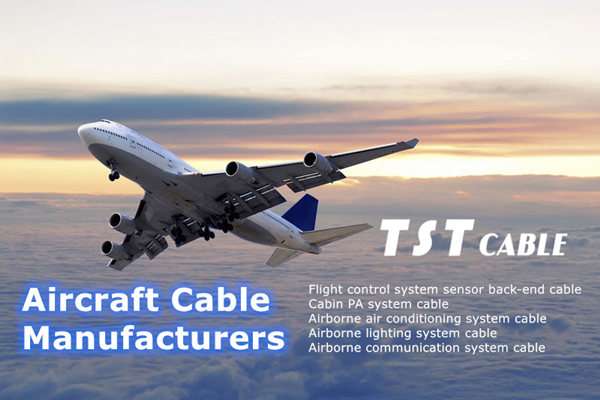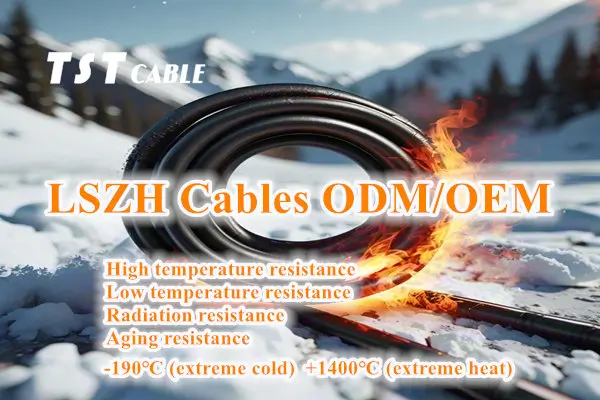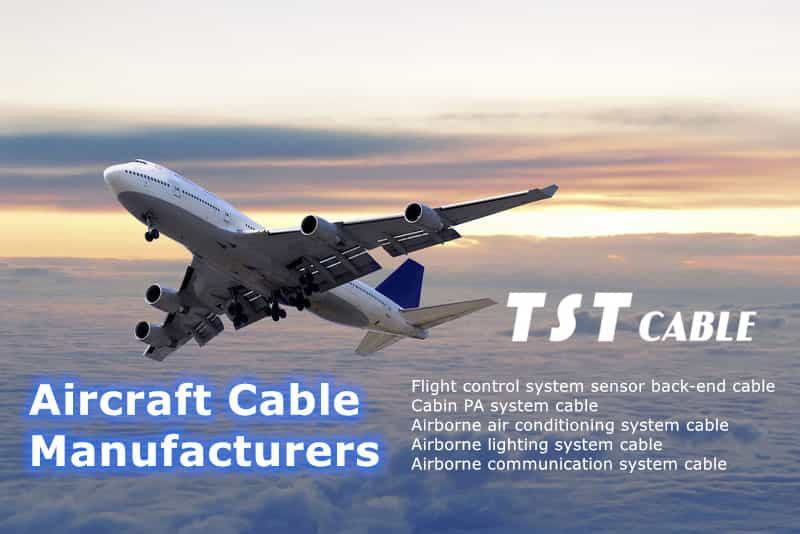In the fields of aviation and aerospace, the importance of cables is self-evident in key areas such as sensor arrays of aircraft engines, rocket engines, and core circuit systems of deep space probes. Especially in new fields such as military industry and low-altitude economy, in order to save space, reduce weight, and improve efficiency, the wiring system needs to be optimized. The original 300℃ high temperature cable needs to be upgraded to 400℃, 500℃, and 600℃. There is a huge demand for 600℃ high temperature resistant cables. In this context, TST cables has successfully overcome many key technologies such as inorganic composite insulation materials and ultra-wide temperature range structural design through unremitting technical research, and has ingeniously created the first 600℃ high temperature cable in China, and has achieved nationalization of all basic materials, effectively filling the technical gap in my country’s ultra-high temperature special cable field.

Why has 600℃ cable become a strategic material?
In the field of extreme equipment, cables need to withstand three tests at the same time:
01 Extreme temperature difference
During the operation of aviation, nuclear power, and military precision equipment, the temperature gradient range is close to -60℃ to 600℃. Even in some extreme cases, the cable must be able to withstand the ultra-high temperature of 800℃ and ensure that it will not be damaged. This places extremely high demands on the high temperature resistance of the cable.
02 Space compression
The wiring space inside the precision equipment is extremely small. The cable must not only be able to work normally in such a space environment, but also meet the complex tasks of detecting signals in a small space and transmitting high-temperature compensation signals when the temperature changes sharply. This means that the structural design of the cable needs to be highly adapted to the special requirements of the small space.
03 Environmental erosion
Aviation and nuclear power plants have high radiation environments, military equipment will face strong vibration interference, and chemical scenes are threatened by acid and alkali corrosion. These harsh environmental factors require cables to have strong corrosion resistance to ensure their stable operation under different harsh working conditions.
TST cables uses original technology to launch TH/J-GWHP series 600℃ high temperature resistant cables, which are low smoke, halogen-free, stable in performance, light and soft. With its hard-core technology, it has become the preferred solution in the field of extreme equipment for national strategic materials.
Hard-core parameters redefine the performance boundary of high temperature cables
TST cables TH/J-GWHP series 600℃ high temperature resistant cables show China’s smart manufacturing strength with a set of “record-breaking” data:
Voltage test :AC 1200V/1min, no breakdown
Insulation resistance at 20℃ DC 500V, core to core ≥ 200M2·km, core to screen> 20M2.km
Insulation resistance at 400℃ DC 500V, core to core> 20M2.km, core to screen> 20M2.km
Insulation resistance at -55℃ DC 500V, core to core> 20M2·km, core to screen> 20M2·km
Wet heat test: 30℃~+60℃, relative humidity 95%+5, 10 cycles, core-to-core, core-to-shield insulation resistance>20MQ.km
When wiring around aircraft engine equipment, it is crucial to select suitable high-temperature resistant cables, considering the high temperature environment generated during engine operation and the strict requirements on cable performance. 600℃ high-temperature resistant cables play a key role in such extreme conditions, ensuring the safety and stability of signal transmission and power supply. The following TST CABLES cable engineer elaborates on the application of aviation cables:
Application background of 600℃ high-temperature resistant aviation cables
Aircraft engines generate extremely high temperatures when working, especially in combustion chambers, turbines and other parts, where the temperature can reach hundreds or even thousands of degrees Celsius. In order to ensure that key components such as engine control systems, sensors, and fuel pumps can operate normally, cables that can maintain good performance in these high-temperature environments must be used.
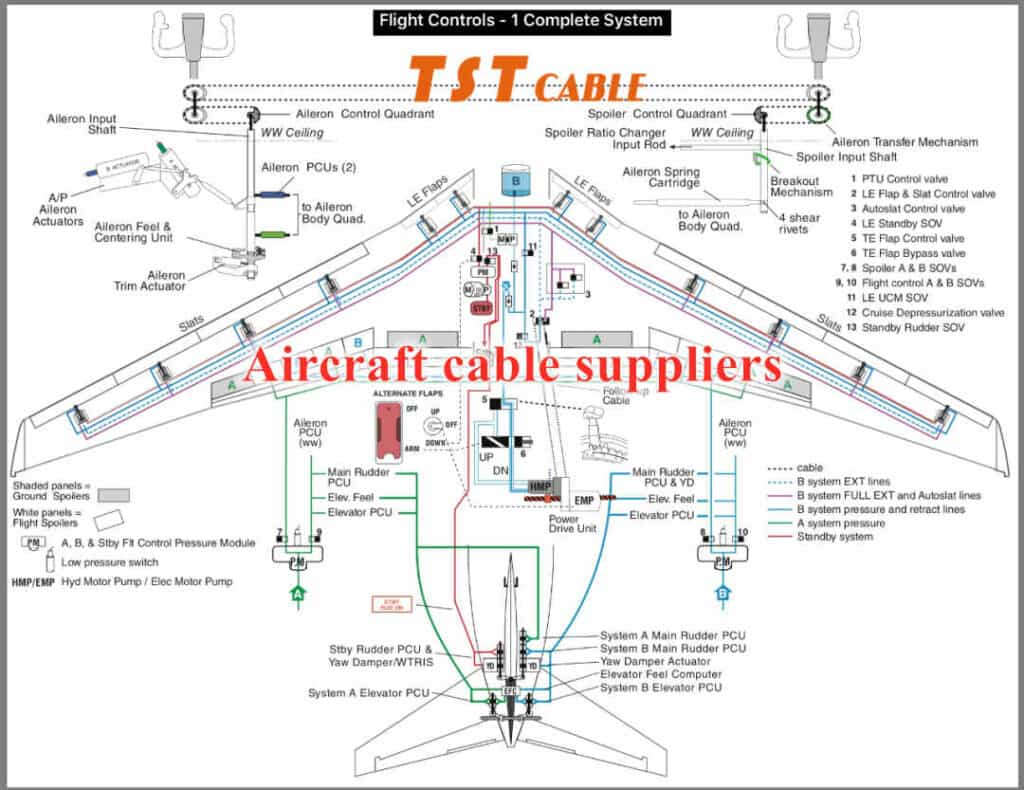
Features of 600℃ high-temperature resistant cables
1. Material selection:
Conductor material: Nickel-chromium alloys (such as Inconel) or copper-nickel alloys are usually used as conductors. These materials not only have excellent conductivity, but also have excellent high-temperature resistance.
Insulation layer: Commonly used insulation materials include mica tape, glass fiber reinforced mica tape, etc., which can provide good electrical insulation protection at high temperatures.
Sheath material: Ceramic silicone rubber or polytetrafluoroethylene (PTFE) are common sheath material choices. They perform well in high temperature environments and have certain mechanical strength.
2. Wide temperature range:
– This type of cable is designed to have a wide operating temperature range and can withstand temperature changes from -60℃ to +600℃ or even higher, meeting the use requirements of aircraft engines throughout their life cycle.
3. High mechanical strength:
– Due to the limited space and vibration inside aircraft engines, cables need to have good flexibility and tensile strength to adapt to complex installation conditions.
4. Strong anti-electromagnetic interference ability:
– For some sensitive signal transmissions, the cable may contain a metal shielding layer to effectively isolate external electromagnetic interference and ensure the accuracy of data transmission.
5. Good fire retardant performance:
– In high temperature environments, cables must also have excellent fire retardant performance to prevent more serious safety accidents caused by accidental fires.
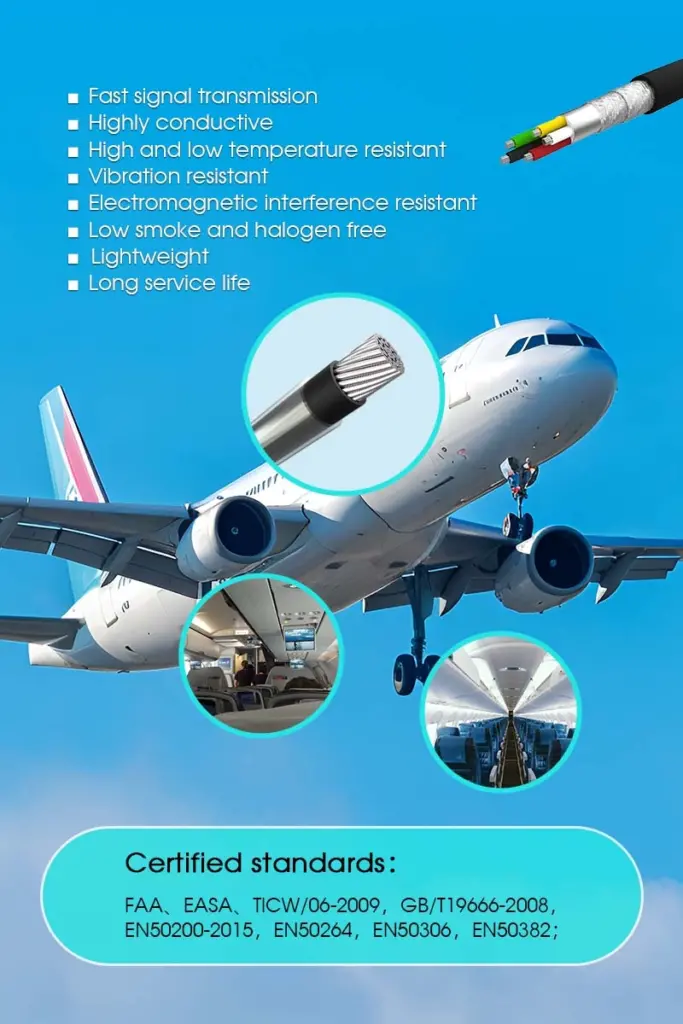
Application examples of 600℃ high temperature resistant aviation cables
1. Aircraft engine control system:
– The engine control unit (ECU) is connected to various actuators and sensors through high temperature resistant cables to ensure accurate control of important parameters such as fuel supply and ignition timing even under extreme high temperature conditions.
2. Aviation sensor lines:
– Temperature sensors, pressure sensors, etc. are directly exposed to high temperature areas, and their connecting cables must be able to withstand the corresponding temperature while ensuring the reliability of signal transmission.
3. Aircraft fuel system:
– The cables around the fuel pump and its related pipelines also face high temperature challenges. The use of high temperature resistant cables helps maintain the normal operation of the system and avoid functional failures caused by overheating.
4. Aircraft exhaust system monitoring:
– Equipment such as exhaust gas analyzers in the exhaust system rely on high temperature resistant cables to transmit data to ensure the accuracy of emission test results.
Precautions for selecting aviation cables
Correct selection: Select cables of appropriate specifications according to the specific temperature requirements of the actual application environment to ensure its long-term reliable operation.
Professional installation: Follow the installation guide provided by the manufacturer, pay attention to the minimum bending radius and maximum tension limit, and avoid damaging the cable structure.
Regular inspection and maintenance: Although the high temperature resistant cable is designed to take into account the stability of long-term use, it is still necessary to conduct regular inspections, especially for the exposed parts, to promptly detect and deal with possible aging or damage problems.
In summary, 600℃ high temperature resistant cable plays an indispensable role in the wiring around aircraft engine equipment. It not only ensures safe and efficient communication between various key components, but also provides a solid foundation for the safety of the entire aircraft. When selecting and using this type of cable, the above factors should be fully considered to ensure the best performance. If you need aviation cables, please email TST CABLES
, and you can also get free samples.
Also available in:
English


